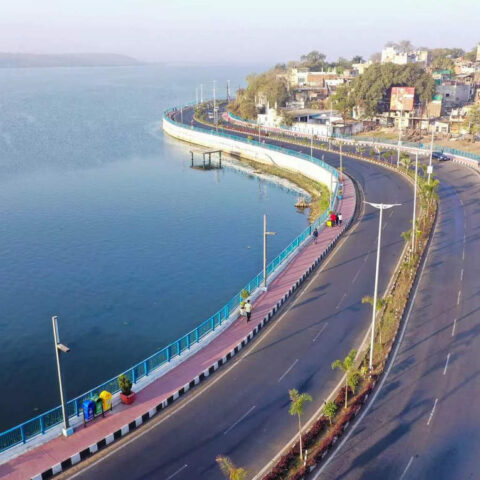With new forms of work and creative housing designs, is there an opportunity to mix or combine them, be it within a unit, a building, a complex, or a district?
The separation of home and work can have its benefits; however, with strict land-use zoning this has been taken to an extreme in some cases. The question is now: should the planning policy pendulum swing back the other way, or possibly rest in the middle?
Unit designs and building forms
Designs need to be functional for working, not just comfortable for living.
A unit could be predominately living with a small amount of working, such as a private studio. Or predominantly business, such as a workshop with an associated residential space.
Editor’s Note: This is Part II of a three-part series of articles about live/work.
Read Part I here; Part III will be published April 24
The commonality is that the occupant is both a resident and proprietor.
The floor plan and unit design needs to both minimize heavy work noises and provide natural light for living. And although sometimes hard to appreciate, there is a distinction between live/work and simply having a home office in a residence.
In reality, sometimes these abodes accommodate a family with working parents and children with homework.
There can be some overlap between uses and activities, with the boundary fixed or flexible through an adaptable configuration. This could include some flex space which doubles for different uses by the occupant as the need arises, possibly switching over the course of the day or week between living and working activities.
Different uses at different times, or a time shift in programming of activities, could maximize the potential utilization of the space, though it may require scheduling of operating hours which could take away from the very flexibility that some occupants desire.
There are different arrangements as noted, yet they all remove the separation of work and home, both physically and mentally. Indeed, if one works at home, one might rarely leave the premise, with a reduction in outings to third places, visits with other people and lack of community leading to social isolation.
Ultimately, do people really want to dwell about work?
Accommodating work at your residence
In its simplest form, a loft apartment with a studio workspace is a self-contained unit that accommodates the two uses; unless it has two entries (which is not typical) the access to both is through the same door.
A commercial visitor into a residential space may not be desirable in terms of privacy and security, and is not normally permitted for live/work units, but inevitably it may occur. For a home-based business with a stream of customers, a separate entry may be preferred.
And with the growth of e-commerce, parcel boxes for efficient courier deliveries are an important part of the building lobby.
For a larger and multi-level unit, the level accessible to the street frontage can be a shop, with a residence above. Another design option is a front / back setup, where one side of the unit is residential and the other side is commercial, which could be in the form of an urban townhouse.
Some early live/work buildings included a communal workshop for woodworking, equipment for metal fabrication, an atelier for design and a rehearsal facility for musicians, providing room for various types of artist activities.
A more white-collar version, where the instrument is a keyboard computer, can incorporate common space or shared facilities into an apartment building for business activities, such as a co-working office amenity for residents.
The Vancouver experience
Various types of live/work premises have been allowed in the City of Vancouver for decades, with permitted uses expanded and refined, generally described as follows:
- Initially defined as “homecraft” in 1956, housing units with home-based work without customers or employees. A house with direct access to a sidewalk or a townhouse with a publicly accessible courtyard are example unit designs.
Later, eventually one and then two classes of live/work studios were created:
- Artist live/work studies that involve industrial processes, flammable materials or the generation of noise in the production of art, which may be more appropriate in a non-residential district.
- Artist live/work studies that allow office work (e.g. consultants, researchers, analysts, accountants), and low-impact, low-hazard art activities (e.g. painters, writers, sculptors), that can fit into a residential building.
In 1987, artist live/work units were permitted in all industrial and commercial (including mixed-use) zones, limited to the production of art and did not allow employees or retail sales.
The initial policy objective was to allow artists to have an affordable and practical studio in a way that accommodated some light industrial-type activities while also satisfying life and safety codes.
Most of these live/work units were in older industrial areas on the immediate periphery of the downtown, sometime in heritage buildings, and others in new projects. Later, tenure was limited to rental and the amount of floor area devoted to residential was capped.
Over time, there was growing awareness of unintended consequences occurring through two phenomena: 1) that some units became exclusively residential, which, particularly for condo/strata ownership tenure units, put pressures on industrial land values, and 2) that some units became more commercial, with associated activities such as retail sales and visitors, beyond those desirable for a residential building.
Later, another class of live/work was established to allow for residential accommodations and other business uses with visiting customers. This was done to advance community cultural and art aims.
Rental studio unit space could be built as a bonus amenity by developers, thereby providing an incentive to incorporate it as part of a larger project or as part of the renovation of an existing building.
In 1995-’96, the city reviewed zones and guidelines relating to live/work. Along with protecting industrial areas, the overall intent was to encourage legal, safe, affordable and functional artist live/work units, with the provision of amenities and cultural facilities, and discourage the displacement of business services and industrial uses.
These policy changes also eliminated the 30 per cent limit on residential use in live/work studios, provided density bonuses for secured affordable rental studios, increased parking requirements and encouraged more functional and livable studios through noise mitigation.
There was growing interest in a less constrained form of live/work, to permit some employees and customers, and greater flexibility in the relative amounts of “live” space and “work” space in a unit. In 2003, the live/work policies were further adjusted to permit “any occupation to be undertaken in any dwelling, as homecraft, but it must be without employees, customers, or signage.”
A new definition of live/work
The city created a new definition for live/work: “premises for Multiple Dwelling, General Office, and any combination of these two land uses … all residential, all office, and anything in between, with no minimum requirements”.
Rationales for these changes included facilitating the permitting process for such types of units, adding opportunities to combine living and working in the same premise, supporting retail in some areas through increased local population and heritage building conservation for some districts.
Notably, live/work spaces create challenges for the assessment authority’s ability to classify property uses for taxation purposes.
Changes in 2005 to the city’s home-based business regulations liberalized restrictions while staying within the basic intent of the use. It allowed residential uses with low impact and low hazard office, service and artist studio activities, which do not pose significant challenges in meeting building code requirements.
In terms of land-use impacts, one of the reports concluded that:
“Combining dwelling and office use in the same unit raises questions about potential impacts. Zoning regulations which segregate land uses in separate districts have evolved over the years and reinforce community expectations regarding acceptable level of impacts. Residents of neighbouring buildings and areas have certain ideas about what type of traffic, signage, noise or people a building is going to generate. Residents within buildings have expectations about what the person in the next unit, down the hall, or at the elevator will be doing. Business owners feel entitled to late deliveries, longer hours, and to generate more light, noise and traffic than if they were located in residential areas.”
The City of Vancouver has long permitted a variety of live/work type uses. There is a recognized need for artist live/work studios to accommodate art production that involves industrial processes, with unique standards to address fire risk and ventilation.
Furthermore, to meet the intent, such artist live/work studios should be affordable given many artists earn low to moderate incomes and cannot afford to pay rent for both a home and production studio.
Yet, there can still be conflicting expectations between the desire for quiet living and the noises of working. An active business is not the sound of silence.
About the Live/Work concept series
This three-part series of articles profiles in-depth the concept of live/work, starting with an overview of its origins, a revisit during the pandemic work-from-home era, different types and forms, associated real estate development and community planning considerations, a profile of the experience in Vancouver and some cautions for the future.
Part 1: LIVE/WORK CONCEPT – Past and Present, Form and Function
The history of living and working in the same space, the modern concept of live/work, how it was accelerated and changed during the COVID pandemic, different types.
Part 2: LIVE/WORK CONCEPT – The Vancouver Experience
Live/work unit designs, building forms, and a profile of the Vancouver experience.
Part 3: LIVE/WORK CONCEPT – Real Estate Interests and Community Planning Concerns
How and where live/work happens, promised benefits, potential perils and cautious conclusions. Coming April 25.









